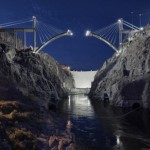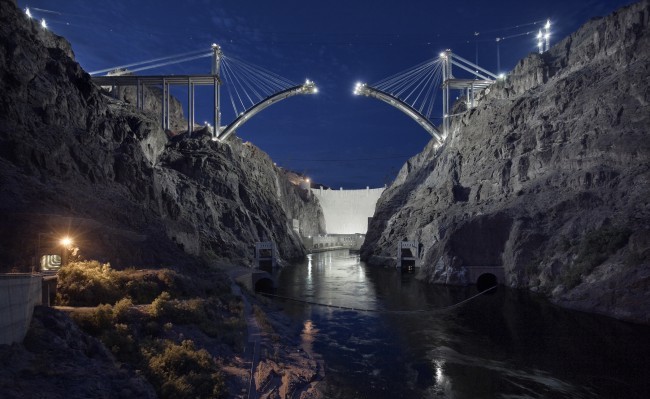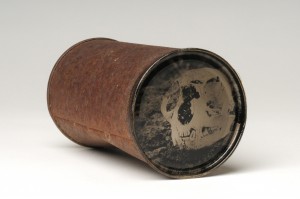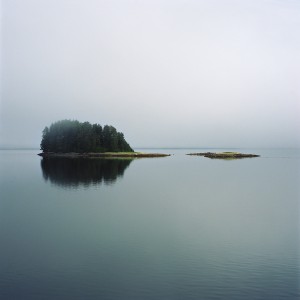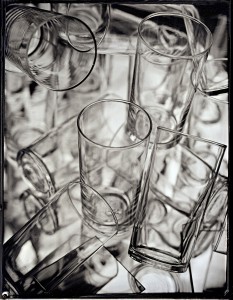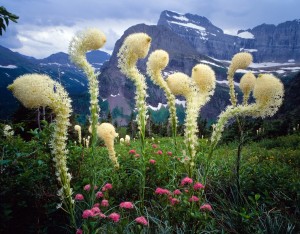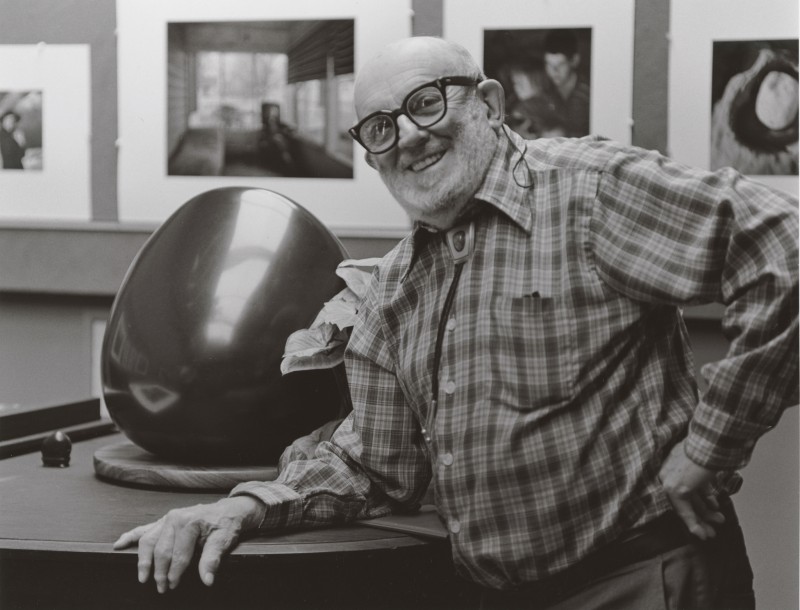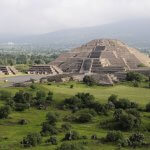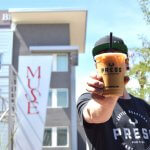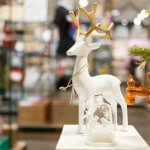A 2009 photograph of the nearly-finished bridge at Hoover Dam gleams in a color-saturated digital print, hanging not far from an image of a grinning Ansel Adams leaning against a table in his own home gallery. Nearby, the clear, haunting image of an animal skull glimmers on a rusty can.
“This is a really exciting moment in the history of photography,” says Becky Senf, “because we still have people who are working in a wet darkroom — they’re using gelatin silver, which is the main type of black-and-white print.” This is how the 1982 picture of Adams was created.
“But we also have people who are working in platinum printing, color printing,” Senf continues. “We have people who are doing daguerreotypes, which is the very oldest type of photograph ever made…. And then there’s this digital moment that’s happening, so there are all kinds of photographers…taking advantage of new technologies to produce work that would have been impossible if you were working with film.”
Senf serves in a joint position as the Norton Family Curator of Photography at both the Phoenix Art Museum and Tucson’s Center for Creative Photography. She’s explaining her choices for the INFOCUS PhotoBid silent auction and raffle at the Museum, where the exhibition continues through Friday, October 18 and culminates in the auction that evening.
“It’s imperative that all the work…in [PhotoBid] is of the same museum quality as everything else we show,” Senf says. “I try and create an auction exhibition that relates to those things that have come before and after but also provides variety and…contrast.” She elaborates, “One of the things that I think about with the INFOCUS auction is getting lots of different kinds of work — so there are portraits…landscapes…urban scenes…nudes… I really want to touch upon as much of the diversity and the dynamism that’s happening right now in the medium as possible.”
Among the auction pieces — donated by the artists — you’ll discover the found-object artwork of David Emitt Adams and a potent image of human frailty from David Maisel titled Library of Dust 3278.
Debra Bloomfield, whose award-winning work hangs in London’s Victoria and Albert Museum and the San Francisco Museum of Modern Art, depicts a suspended moment between ocean and land with Wilderness. Jamey Stillings chronicled the construction of the Hoover Dam bypass bridge, while Jerry Spagnoli, who spoke at Phoenix Art Museum in January, created a small treasure of a still life: a daguerreotype of drinking glasses.
“It’s this old process where you actually make the photograph on a polished sheet of silver-coated metal,” explains Senf, “and so it’s this very reflective, mysterious surface. And the process dates back…right to the beginning of the invention of photography in 1839, and yet this artist continues to use this process to make these new, very modern works.”
The raffle offers a more affordable option for collectors, she says. “It’s an opportunity to spend a little less — the tickets are $20 a piece; you can get three for $50, or seven for $100, and then you get to choose which one of the raffle items you want…so if there’s one of the pieces that you particularly love, you can load all your tickets in that bin.” Options include three prints and signed books — Richard Avedon’s In the American West, and Mark Klett’s Saguaros. Appetizers, a cash bar, and live music by celebrated Valley pianist Charles Lewis round out the evening.
Since the auction’s host group INFOCUS was founded about five years ago as the photography support organization for the Museum, it’s contributed nearly $100,000, says Senf. The money helps pay for guest speakers, brochures, and photography exhibitions, while perks for INFOCUS members include visits to private collections and artists’ studios.
The Phoenix Art Museum’s photography exhibits come from the Center for Creative Photography at the University of Arizona, which was founded in 1975 by Ansel Adams and then-University president John Schaefer. “We’re unusual in that we don’t just collect masterpieces of photography, but we really are an archive collection,” Senf says. “So for instance, Ansel Adams — we have around 3,000 of his prints. I’m not even sure how many W. Eugene Smith prints we have — thousands and thousands of his works.”
She continues, “And then we also collect things like correspondence, negatives, printing notes, teaching materials, unpublished manuscripts…all kinds of documentation and materials that help us understand the creative process. So the Center is a pretty unusual institution.” With justifiable pride, she adds, “We have about a hundred thousand photographs in our collection, and…we estimate somewhere around five million of those archival objects.”
With a smile, Senf says, “The collaboration with Phoenix Art Museum was really spectacular, because…it expanded what the Center was able to do in terms of sharing this incredible wealth of photography with the world.”
If you go:
Event: INFOCUS PhotoBid 2013
Exhibition Dates: October 5-18; Silent auction and raffle Friday, Oct. 18, 5:30 p.m. to 9 p.m.
Where: Phoenix Art Museum, 1625 N. Central Ave.


